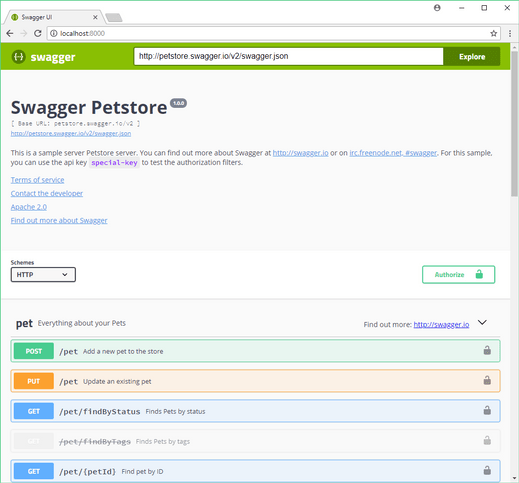Swagger UI for Golang
Brings Swagger UI to Go. This package implements an http.Handler which serves the Swagger UI. No assets needed, as the Swagger UI javascript and css assets are embedded.
What's inside?
This includes three flavors:
swaggerui.SwaggerHandler()
Which searches for, in this order, a swagger.json, swagger.yml or swagger.yaml file on the filesystem.
It searches the path of the caller function and the path of the executable, up to four parent folders.
swaggerui.SwaggerFileHandler(path)
Handles a specified path to a swagger file (json or yaml format)
swaggerui.SwaggerURLHandler(url)
Handles a local or remote url to a swagger file.
Examples
A simple http Swagger UI server:
http.ListenAndServe(":8080", swaggerui.SwaggerHandler())
The famous pet store:
http.ListenAndServe(":8080", swaggerui.SwaggerURLHandler("http://petstore.swagger.io/v2/swagger.json"))
Using a file from the system:
// yaml
http.ListenAndServe(":8080", swaggerui.SwaggerFileHandler("./swagger.yaml"))
http.ListenAndServe(":8080", swaggerui.SwaggerFileHandler("./swagger.yml"))
// json
http.ListenAndServe(":8080", swaggerui.SwaggerFileHandler("./swagger.json"))
Path prefixed using http:
http.Handle("/swagger/", http.StripPrefix("/swagger/", swaggerui.SwaggerHandler()))
http.ListenAndServe(":8080", nil)
Using gorilla/mux:
router := mux.NewRouter()
router.PathPrefix("/swagger/").Handler(http.StripPrefix("/swagger/", swaggerui.SwaggerHandler()))
http.ListenAndServe(":8080", router)
